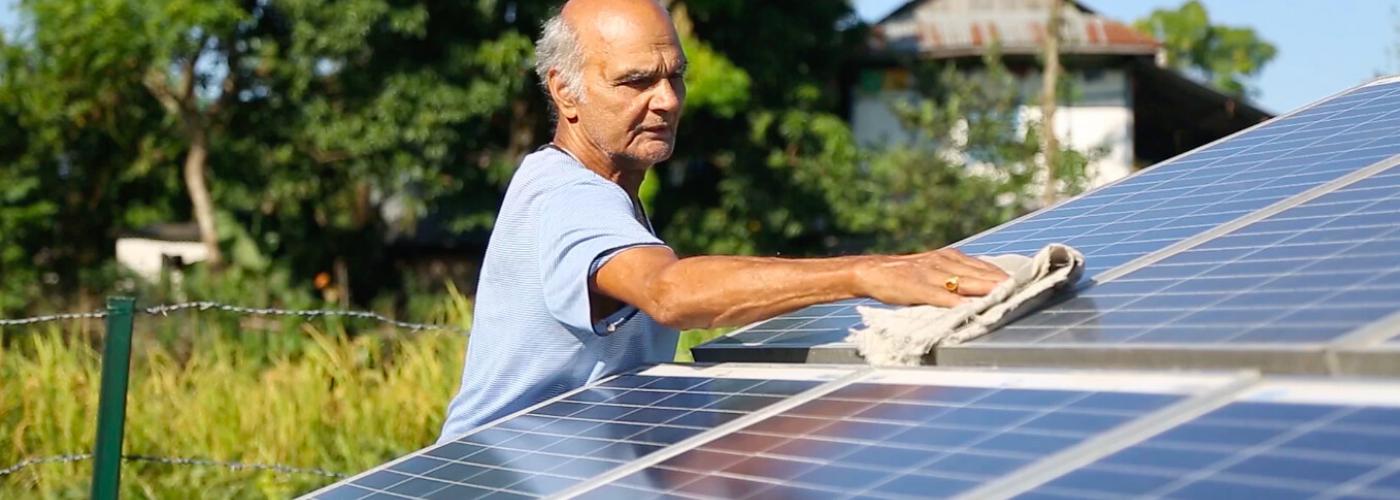A Case for Low-Cost, Renewable Green Energy to Power Up Papua New Guinea
Image

This post originally appeared on Medium and was authored by Mary Jane Maxwell, Lead Consultant at the Washington Business Dynamics.
Papua New Guinea has one of the world’s highest rates of electrification poverty — just 13 percent of its population has access to power. That’s why in 2010 the government of Papua New Guinea (PNG) made access to reliable, affordable, and modern clean energy sources to more than 70 percent of households by 2030 the heart of its Development Strategic Plan. Reaching the targets in all the other development sectors (e.g., economic prosperity, education, health, jobs) rests on its citizen’s ability to access electricity.
But exactly how PNG delivers power to its populace is equally important to the island nation. The Development Strategic Plan adheres to PNG’s national policy, Vision 2050, that calls for carbon neutrality by 2050. Additionally, renewable energy to mitigate climate change is the main focus of PNG’s new National Energy Policy 2018–2028. The Pacific islands are suffering the negative impacts of global warming including violent storms, intensive droughts, rising sea levels, and depleted fisheries.
Here’s the conundrum for PNG — maintaining the careful balance of developing a clean, renewable energy sector in tandem with pursuing economic prosperity. The next steps for PNG have never been at a more critical juncture. The government must decide which international development partners will best support its energy policies while protecting the fragile island nation for future generations. The stakes are high.
Papua New Guinea is one of the world’s most expensive places to generate electricity. The country is also among the world’s sunniest locations — 300 days of sunshine a year. Just those two facts alone make a strong case for more investment in low-cost, solar energy.
The 13 percent of Papua New Guineans that already have access to electricity live in urban centers and connected to a grid. But 80 percent of the country’s 8.2 million people live in remote, rugged, mountain terrain with very little infrastructure. Getting them on a national grid would be an enormously complicated, environmentally destructive, and expensive undertaking.
Most of the island nation’s households rely on subsistence agriculture. As a result, Papua New Guineans count themselves among the world’s most vulnerable to extreme weather events exacerbated by a rapidly changing climate, including droughts, floods, and landslides, which can lead to food insecurity. Other major social, cultural, economic and environmental threats to the country and its rich biodiversity include rapid deforestation, forest degradation, illegal fishing, and industrial pollution.
To complicate matters further, subsistence farmers carry out around 46 percent of the deforestation in PNG for lighting and cooking fuel — activities that solar technology can end. Tropical forests cover more than 77 percent of PNG and represent the third largest intact tropical forest in the world when taken together with the forest of West Papua. Deforestation accounts for 17 percent of annual greenhouse gas emissions worldwide, with tropical forest deforestation accounting for half of that percentage.
Most of PNG’s denuded forests, though, are the result of logging for export. According to Global Witness, over 70 percent of PNG’s logging operations are illegal and violate community land rights. At least 85 percent of the PNG’s tropical logs are exported to China, where they are processed and exported as finished lumber products.
Armed with these facts, it behooves the government of PNG to choose the right international development partners who will develop projects that view economic and energy targets as interdependent with strong environmental protections. To achieve this delicate balance, the private sector — with public support — can deliver technologically advanced low-cost, renewable energy solutions to meet PNG’s target to provide access to clean, reliable, and affordable energy to 70 percent of its population by 2030.
About the author: Mary Jane Maxwell, Ph.D., is a Lead Consultant with Washington Business Dynamics, a Service-Disabled Veteran-Owned Small Business that supports USAID in implementing its Private Sector Engagement Policy across the Agency. The PSE Support Mechanism provides technical support services to USAID in Washington, DC and at its Missions around the world.


